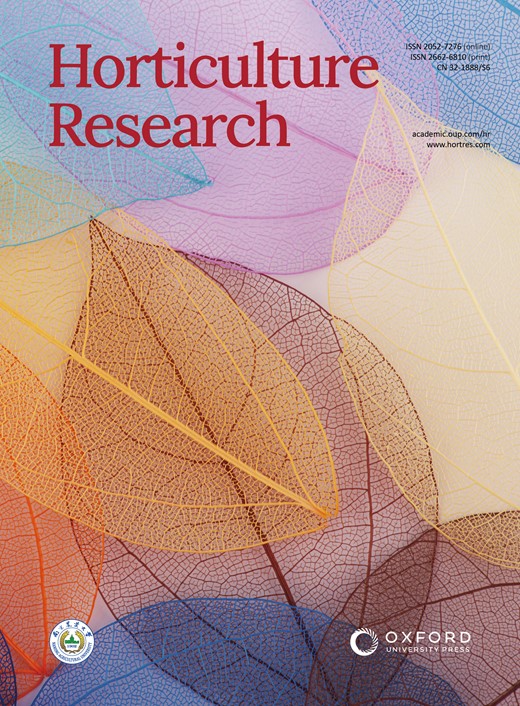Genomic and Epigenomic coordination maintains subgenome transcriptional balance in Allotetraploid Brassica napus
IF 8.5
1区 农林科学
Q1 Agricultural and Biological Sciences
引用次数: 0
Abstract
Allopolyploids have successfully overcome ‘genome shock’, yet how their subgenomes adapt to coexistence remains largely unclear. Here, we constructed high-resolution epigenomic maps for the diploids Brassica rapa (ArAr) and B. oleracea (CoCo), and examined epigenomic variation in the allotetraploid B. napus (AnAnCnCn) relative to its putative progenitors. We discovered that coordinated genomic and epigenomic reprogramming in B. napus drove convergence of sequence and epigenomic features between An and Cn, significantly reducing expression divergence in homoeologs. Convergent homoeologs were functionally enriched in pathways related to genome stability and abiotic stress responses. Notably, Cn in B. napus exhibited greater sequence conservation and epigenetic homeostasis. Furthermore, transcription factor binding sites (TFBSs) affected by genomic variation in An showed convergent regulatory changes toward Cn, indicating that allopolyploids mitigate subgenomic conflicts through multi-layered regulatory coordination. In conclusion, coordinated genomic and epigenomic convergence provides critical insights into the stability and adaptive evolution of allopolyploids.基因组和表观基因组协调维持异源四倍体甘蓝型油菜亚基因组转录平衡
异源多倍体已经成功克服了“基因组冲击”,但它们的亚基因组是如何适应共存的仍不清楚。在此,我们构建了二倍体油菜(ArAr)和甘蓝(CoCo)的高分辨率表观基因组图谱,并检测了异源四倍体甘蓝型油菜(AnAnCnCn)相对于其假定祖先的表观基因组变异。研究发现,甘蓝型油菜基因组和表观基因组的协同重编程驱动了An和Cn之间序列和表观基因组特征的趋同,显著降低了同源基因的表达差异。收敛同源基因在基因组稳定性和非生物胁迫反应相关的途径中功能丰富。值得注意的是,甘蓝型油菜中Cn具有较强的序列保守性和表观遗传稳态。此外,受基因组变异影响的转录因子结合位点(TFBSs)对Cn表现出收敛性的调控变化,表明异源多倍体通过多层调控协调来缓解亚基因组冲突。总之,基因组和表观基因组的协调趋同为异源多倍体的稳定性和适应性进化提供了重要的见解。
本文章由计算机程序翻译,如有差异,请以英文原文为准。
求助全文
约1分钟内获得全文
求助全文
来源期刊

Horticulture Research
Biochemistry, Genetics and Molecular Biology-Biochemistry
CiteScore
11.20
自引率
6.90%
发文量
367
审稿时长
20 weeks
期刊介绍:
Horticulture Research, an open access journal affiliated with Nanjing Agricultural University, has achieved the prestigious ranking of number one in the Horticulture category of the Journal Citation Reports ™ from Clarivate, 2022. As a leading publication in the field, the journal is dedicated to disseminating original research articles, comprehensive reviews, insightful perspectives, thought-provoking comments, and valuable correspondence articles and letters to the editor. Its scope encompasses all vital aspects of horticultural plants and disciplines, such as biotechnology, breeding, cellular and molecular biology, evolution, genetics, inter-species interactions, physiology, and the origination and domestication of crops.
 求助内容:
求助内容: 应助结果提醒方式:
应助结果提醒方式:


